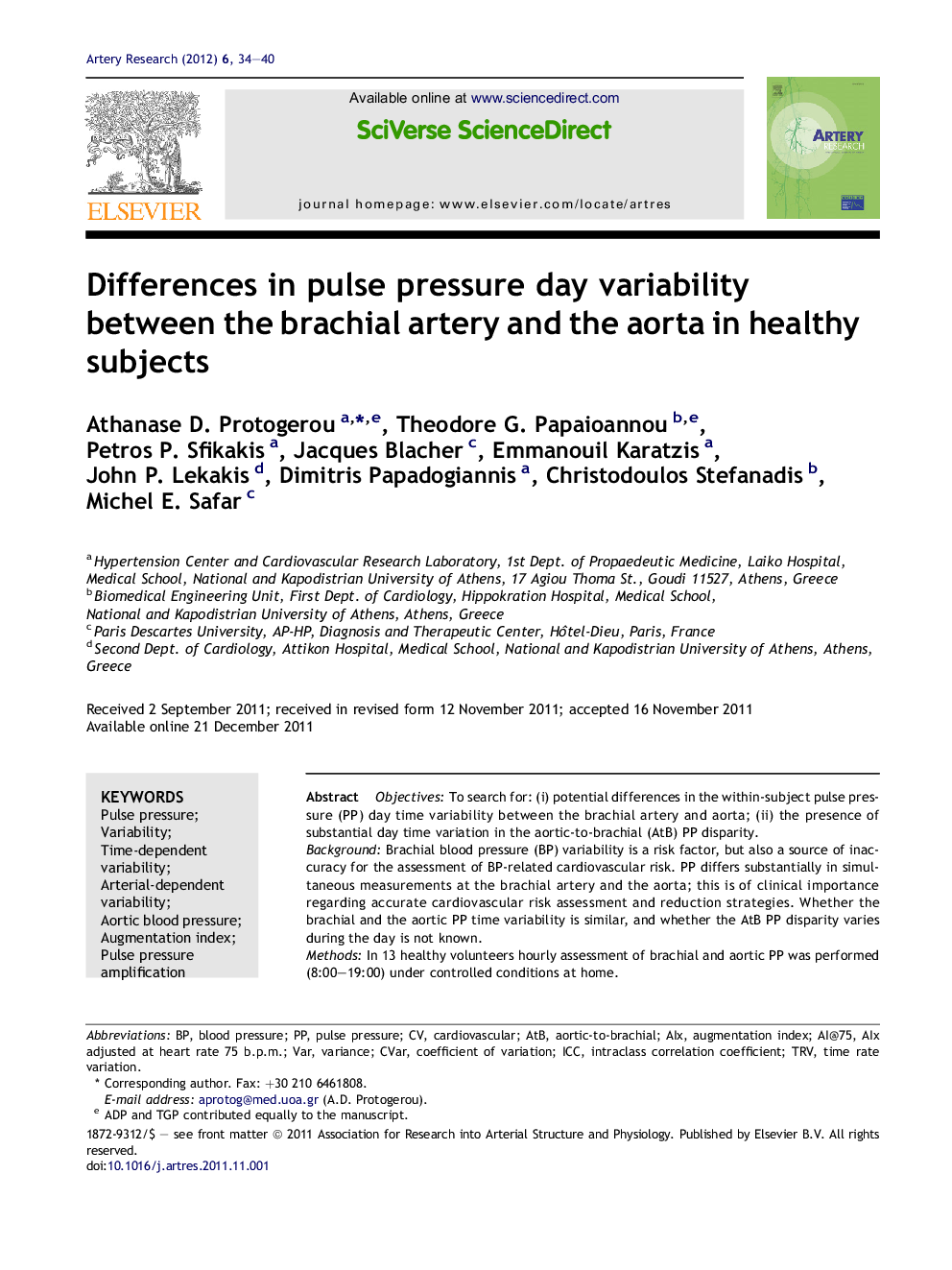| Article ID | Journal | Published Year | Pages | File Type |
|---|---|---|---|---|
| 2892071 | Artery Research | 2012 | 7 Pages |
ObjectivesTo search for: (i) potential differences in the within-subject pulse pressure (PP) day time variability between the brachial artery and aorta; (ii) the presence of substantial day time variation in the aortic-to-brachial (AtB) PP disparity.BackgroundBrachial blood pressure (BP) variability is a risk factor, but also a source of inaccuracy for the assessment of BP-related cardiovascular risk. PP differs substantially in simultaneous measurements at the brachial artery and the aorta; this is of clinical importance regarding accurate cardiovascular risk assessment and reduction strategies. Whether the brachial and the aortic PP time variability is similar, and whether the AtB PP disparity varies during the day is not known.MethodsIn 13 healthy volunteers hourly assessment of brachial and aortic PP was performed (8:00–19:00) under controlled conditions at home.ResultsAortic PP day variability was consistently and significantly lower than brachial PP (assessed by: standard deviation, variance and time rate variation index, p < 0.05 for all). Individual AtB PP difference (brachial – aortic PP, mmHg) varied substantially within all the 13 subjects; a significant variation during the day in the AtB PP amplification (defined as brachial/aortic PP) was evident (p = 0.006).ConclusionsBy taking into account both time and arterial space, substantial physiological differences in PP variability between the brachial artery and the aorta were observed. These novel findings suggest that non-invasive 24-h aortic ambulatory BP monitoring is warranted in order to significantly improve CV risk assessment and reduction strategies. This possibility must be tested in future clinical studies.
